Drug Catalog - Product Detail
ENOXAPARIN SODIUM PF FOR INJECTION INJECT. 120MG/0.8ML 10X0.8ML
| NDC | Mfr | Size | Str | Form |
|---|---|---|---|---|
| 00955-1012-10 | WINTHROP, US | 0 | 120MG/0.8ML | SOLUTION |
PACKAGE FILES

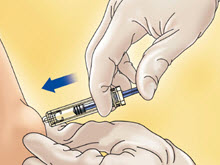
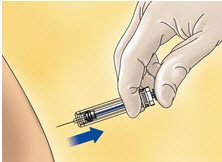
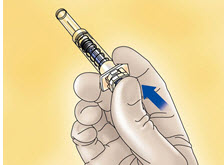

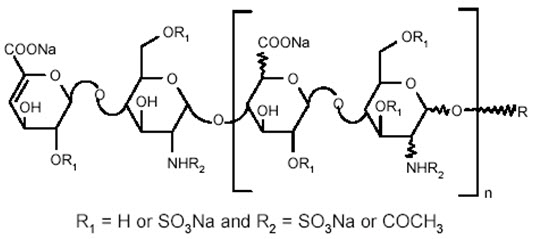
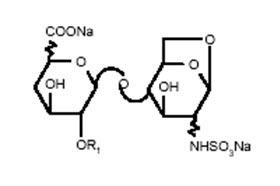
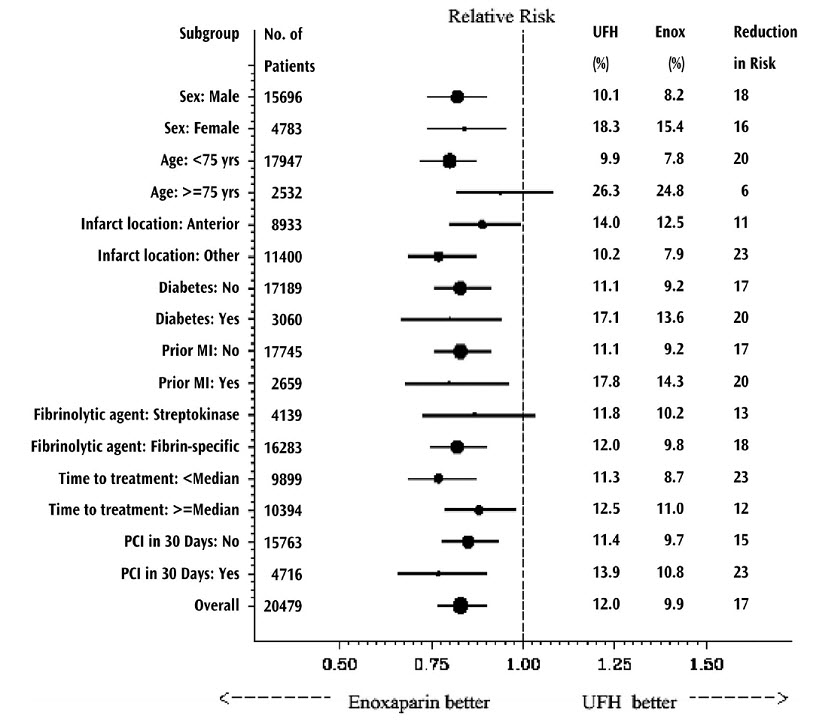
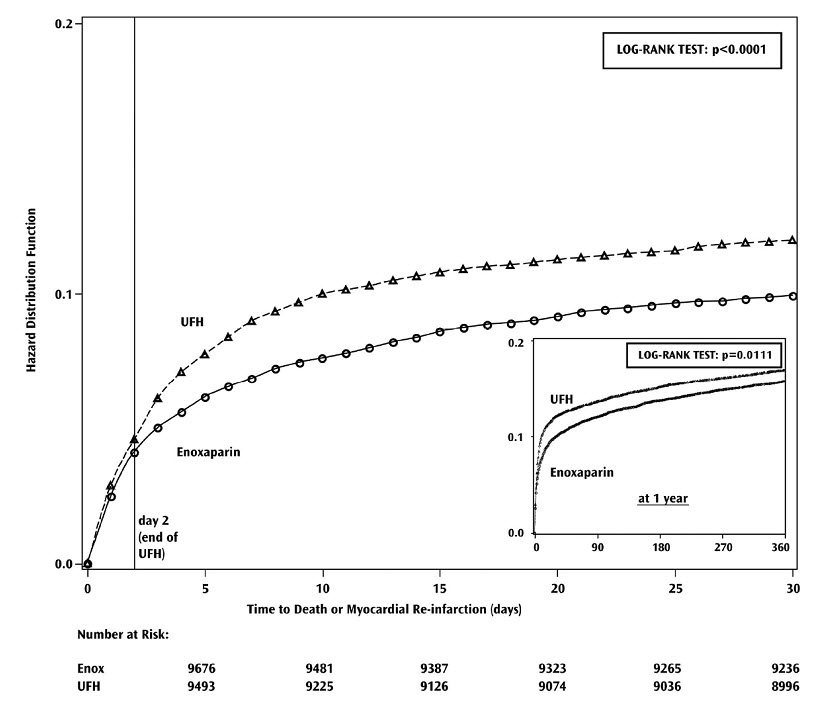
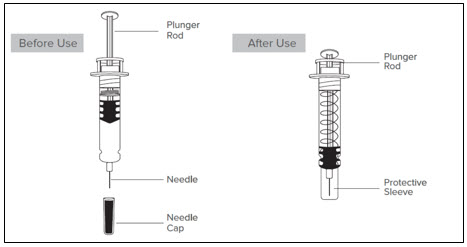
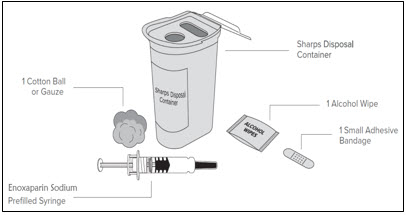
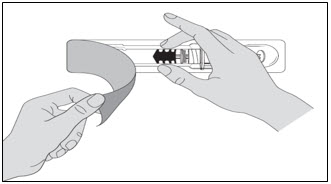


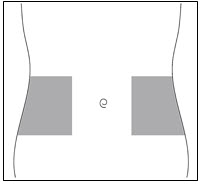
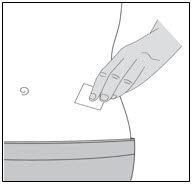
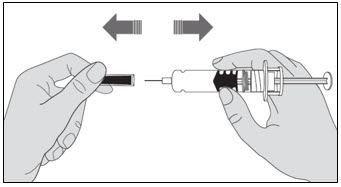
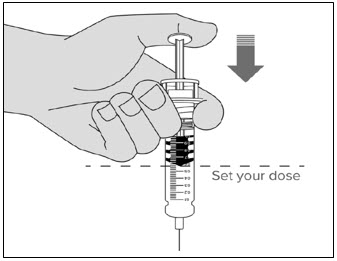

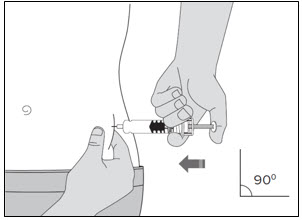
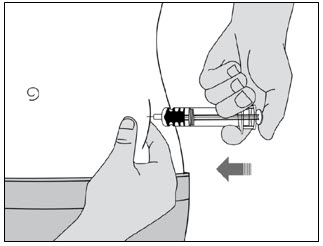
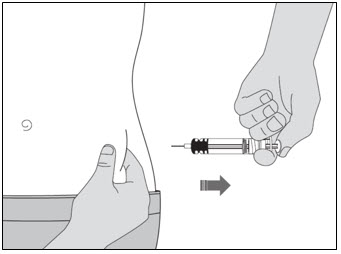
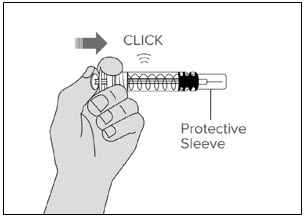
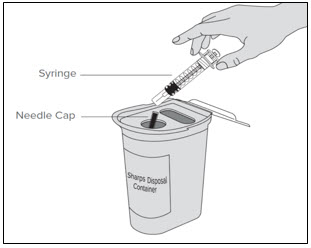
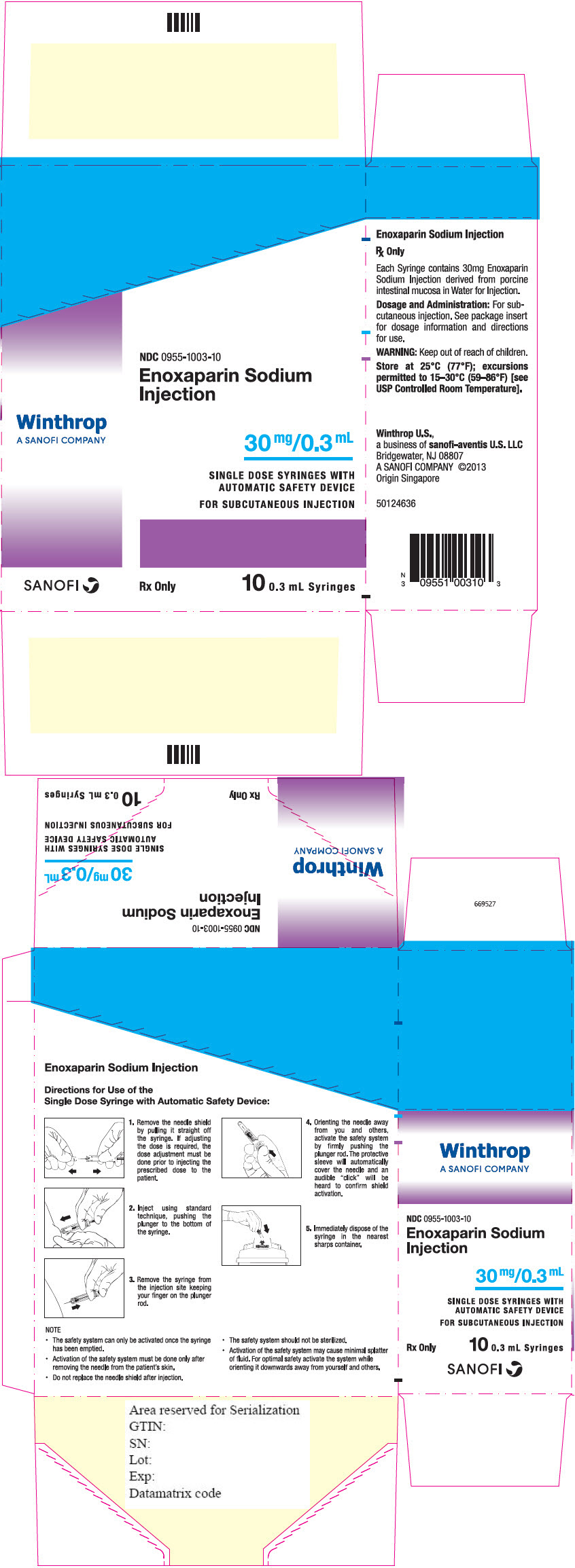
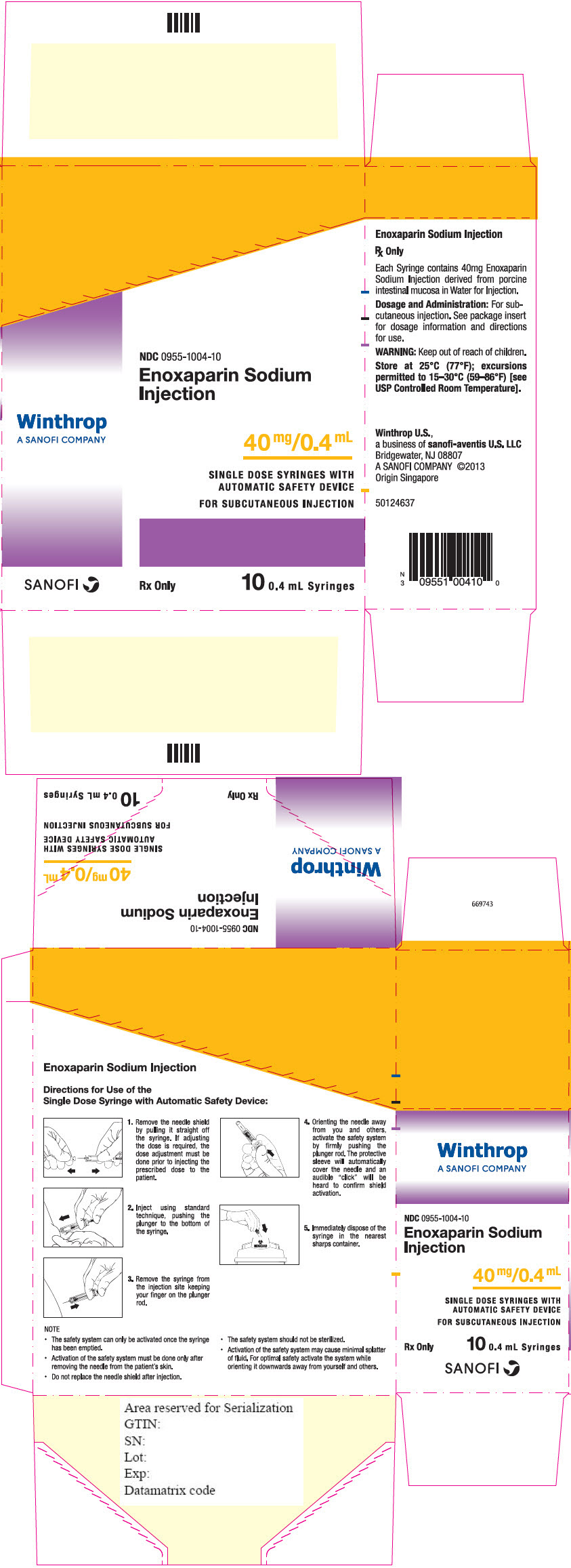

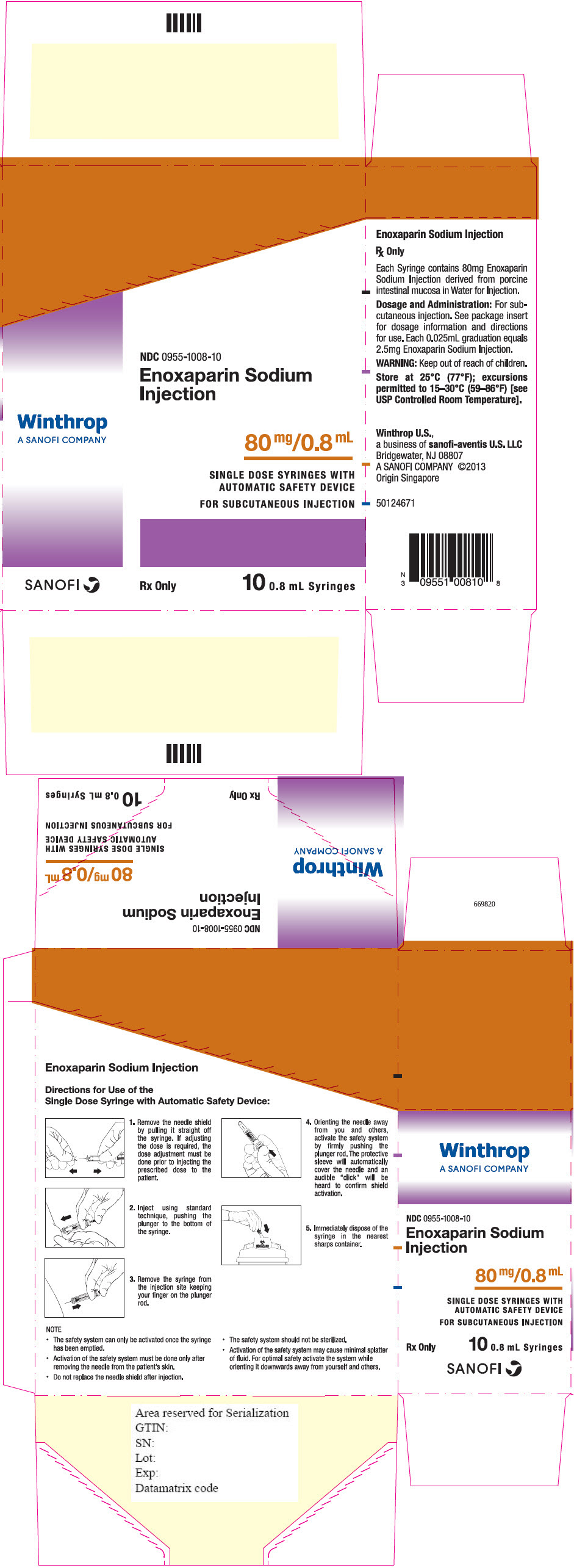
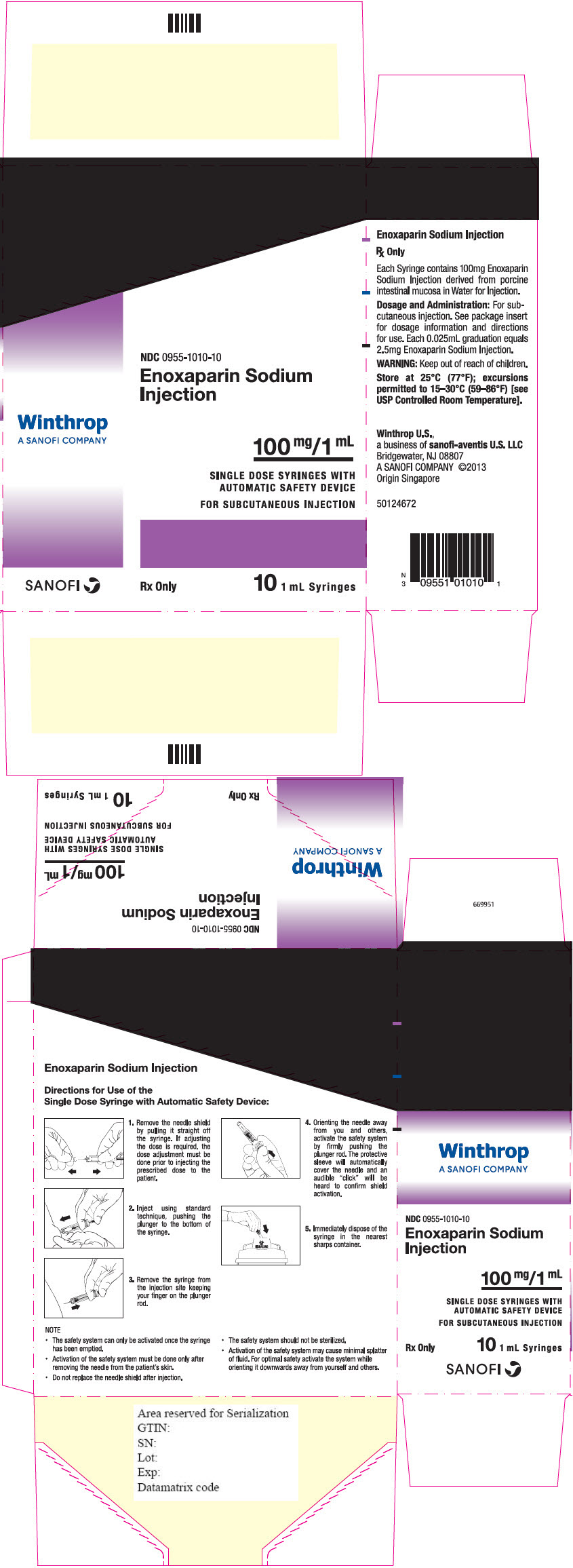
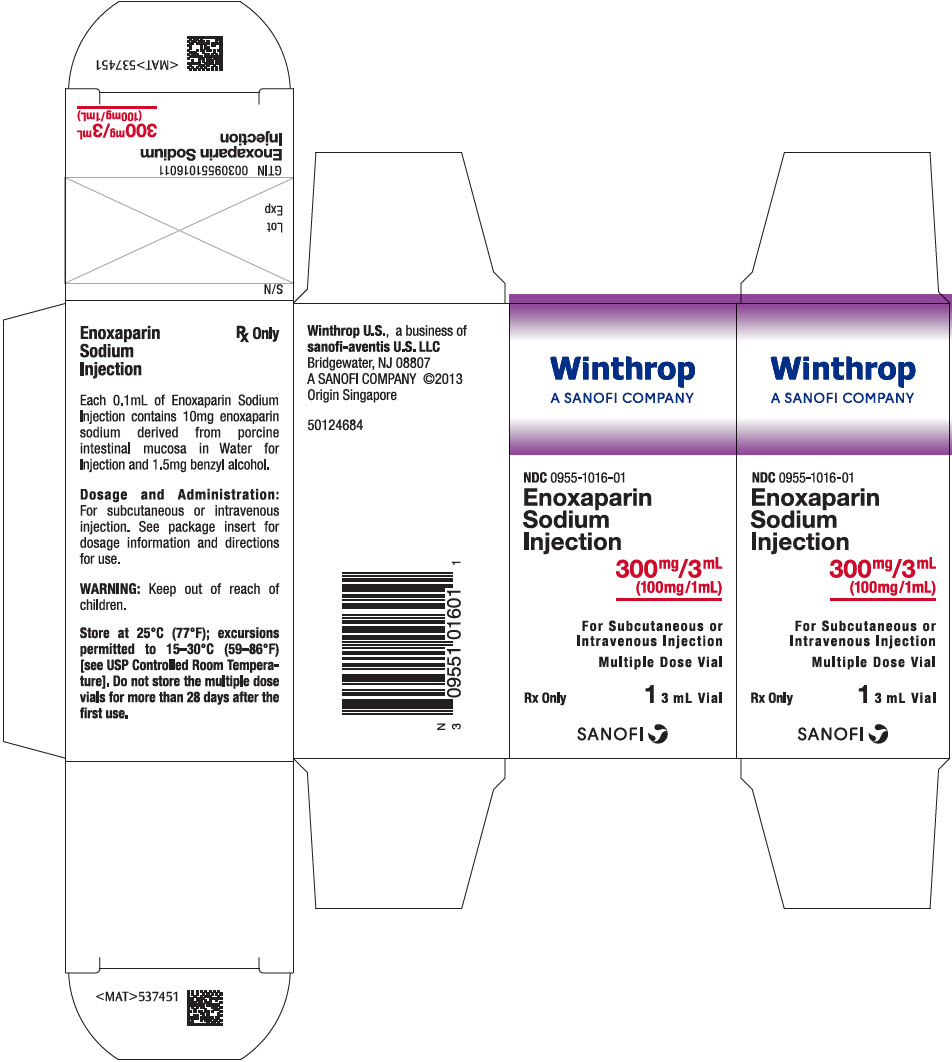
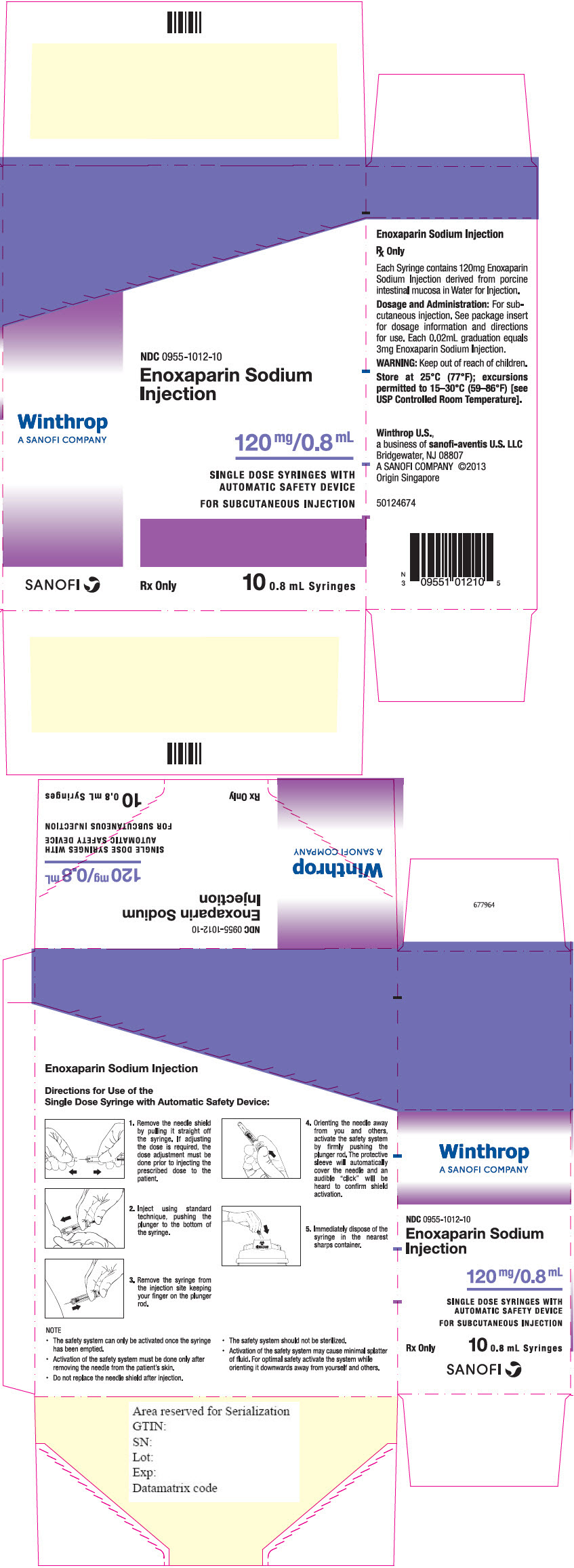

Generic Name
ENOXAPARIN SODIUM
Substance Name
ENOXAPARIN SODIUM
Product Type
HUMAN PRESCRIPTION DRUG
Route
SUBCUTANEOUS
Application Number
NDA020164
Description
11 DESCRIPTION Enoxaparin sodium injection is a sterile aqueous solution containing enoxaparin sodium, a low molecular weight heparin. The pH of the injection is 5.5 to 7.5. Enoxaparin sodium is obtained by alkaline depolymerization of heparin benzyl ester derived from porcine intestinal mucosa. Its structure is characterized by a 2-O-sulfo-4-enepyranosuronic acid group at the non-reducing end and a 2-N,6-O-disulfo-D-glucosamine at the reducing end of the chain. About 20% (ranging between 15% and 25%) of the enoxaparin structure contains a 1,6-anhydro derivative on the reducing end of the polysaccharide chain. The drug substance is the sodium salt. The average molecular weight is about 4500 daltons. The molecular weight distribution is: <2000 daltons ≤20% 2000 to 8000 daltons ≥68% >8000 daltons ≤18% STRUCTURAL FORMULA R X X = Percent of polysaccharide chain containing 1,6-anhydro derivative on the reducing end =15 to 25% n=0 to 20 100-X H n=1 to 21 Enoxaparin sodium injection 100 mg/mL Concentration contains 10 mg enoxaparin sodium (approximate anti-Factor Xa activity of 1000 IU [with reference to the W.H.O. First International Low Molecular Weight Heparin Reference Standard]) per 0.1 mL Water for Injection. Enoxaparin sodium injection 150 mg/mL Concentration contains 15 mg enoxaparin sodium (approximate anti-Factor Xa activity of 1500 IU [with reference to the W.H.O. First International Low Molecular Weight Heparin Reference Standard]) per 0.1 mL Water for Injection. The enoxaparin sodium prefilled syringes and graduated prefilled syringes are preservative-free and intended for use only as a single-dose injection. The multiple-dose vial contains 15 mg benzyl alcohol per 1 mL as a preservative [see Dosage and Administration (2) and How Supplied/Storage and Handling (16) ] . Chemical Structure Chemical Structure
How Supplied
16 HOW SUPPLIED/STORAGE AND HANDLING Enoxaparin sodium injection is available in two concentrations (see Tables 26 and 27 ). Table 26: 100 mg/mL Concentration Dosage Unit/Strength Strength represents the number of milligrams of enoxaparin sodium in Water for Injection. Enoxaparin sodium 30 and 40 mg prefilled syringes, and 60, 80, and 100 mg graduated prefilled syringes each contain 10 mg enoxaparin sodium per 0.1 mL Water for Injection. Anti-Xa Activity Approximate anti-Factor Xa activity based on reference to the W.H.O. First International Low Molecular Weight Heparin Reference Standard. Package Size (per carton) Label Color NDC # 0955- Single-Dose Prefilled Syringes Each enoxaparin sodium prefilled syringe is for single, one-time use only and is affixed with a 27 gauge × 1/2-inch needle. 30 mg/0.3 mL 3000 IU 10 syringes Medium Blue 1003-10 40 mg/0.4 mL 4000 IU 10 syringes Yellow 1004-10 Single-Dose Graduated Prefilled Syringes 60 mg/0.6 mL 6000 IU 10 syringes Orange 1006-10 80 mg/0.8 mL 8000 IU 10 syringes Brown 1008-10 100 mg/1 mL 10,000 IU 10 syringes Black 1010-10 Multiple-Dose Vial Each enoxaparin sodium multiple-dose vial contains 15 mg benzyl alcohol per 1 mL as a preservative. 300 mg/3 mL 30,000 IU 1 vial Red 1016-01 Table 27: 150 mg/mL Concentration Dosage Unit/Strength Strength represents the number of milligrams of enoxaparin sodium in Water for Injection. Enoxaparin sodium 120 and 150 mg graduated prefilled syringes contain 15 mg enoxaparin sodium per 0.1 mL Water for Injection. Anti-Xa Activity Approximate anti-Factor Xa activity based on reference to the W.H.O. First International Low Molecular Weight Heparin Reference Standard. Package Size (per carton) Syringe Label Color NDC # 0955- Single-Dose Graduated Prefilled Syringes Each enoxaparin sodium graduated prefilled syringe is for single, one-time use only and is affixed with a 27 gauge × 1/2-inch needle. 120 mg/0.8 mL 12,000 IU 10 syringes Purple 1012-10 150 mg/1 mL 15,000 IU 10 syringes Navy Blue 1015-10 Store at 25°C (77°F); excursions permitted to 15°C–30°C (59°F–86°F) [see USP Controlled Room Temperature]. Store in the original carton or packaging until ready to use. Do not store the multiple-dose vials for more than 28 days after the first use.
Indications & Usage
1 INDICATIONS AND USAGE Enoxaparin sodium is a low molecular weight heparin (LMWH) indicated for: Prophylaxis of deep vein thrombosis (DVT) in abdominal surgery, hip replacement surgery, knee replacement surgery, or medical patients with severely restricted mobility during acute illness ( 1.1 ) Inpatient treatment of acute DVT with or without pulmonary embolism ( 1.2 ) Outpatient treatment of acute DVT without pulmonary embolism ( 1.2 ) Prophylaxis of ischemic complications of unstable angina and non–Q-wave myocardial infarction (MI) ( 1.3 ) Treatment of acute ST-segment elevation myocardial infarction (STEMI) managed medically or with subsequent percutaneous coronary intervention (PCI) ( 1.4 ) 1.1 Prophylaxis of Deep Vein Thrombosis Enoxaparin sodium is indicated for the prophylaxis of deep vein thrombosis (DVT), which may lead to pulmonary embolism (PE): in patients undergoing abdominal surgery who are at risk for thromboembolic complications [see Clinical Studies (14.1) ] in patients undergoing hip replacement surgery, during and following hospitalization in patients undergoing knee replacement surgery in medical patients who are at risk for thromboembolic complications due to severely restricted mobility during acute illness 1.2 Treatment of Acute Deep Vein Thrombosis Enoxaparin sodium is indicated for: the inpatient treatment of acute deep vein thrombosis with or without pulmonary embolism , when administered in conjunction with warfarin sodium the outpatient treatment of acute deep vein thrombosis without pulmonary embolism, when administered in conjunction with warfarin sodium 1.3 Prophylaxis of Ischemic Complications of Unstable Angina and Non–Q-Wave Myocardial Infarction Enoxaparin sodium is indicated for the prophylaxis of ischemic complications of unstable angina and non–Q-wave myocardial infarction, when concurrently administered with aspirin. 1.4 Treatment of Acute ST-Segment Elevation Myocardial Infarction Enoxaparin sodium, when administered concurrently with aspirin, has been shown to reduce the rate of the combined endpoint of recurrent myocardial infarction or death in patients with acute ST-segment elevation myocardial infarction (STEMI) receiving thrombolysis and being managed medically or with percutaneous coronary intervention (PCI).
Dosage and Administration
2 DOSAGE AND ADMINISTRATION See full prescribing information for dosing and administration information. ( 2 ) 2.1 Pretreatment Evaluation Evaluate all patients for a bleeding disorder before starting enoxaparin sodium treatment, unless treatment is urgently needed. 2.2 Adult Dosage Abdominal Surgery The recommended dose of enoxaparin sodium is 40 mg by subcutaneous injection once a day (with the initial dose given 2 hours prior to surgery) in patients undergoing abdominal surgery who are at risk for thromboembolic complications. The usual duration of administration is 7 to 10 days [see Clinical Studies (14.1) ] . Hip or Knee Replacement Surgery The recommended dose of enoxaparin sodium is 30 mg every 12 hours administered by subcutaneous injection in patients undergoing hip or knee replacement surgery. Administer the initial dose 12 to 24 hours after surgery, provided that hemostasis has been established. The usual duration of administration is 7 to 10 days [see Clinical Studies (14.2) ] . A dose of enoxaparin sodium of 40 mg once a day subcutaneously may be considered for hip replacement surgery for up to 3 weeks. Administer the initial dose 12 (±3) hours prior to surgery. Medical Patients during Acute Illness The recommended dose of enoxaparin sodium is 40 mg once a day administered by subcutaneous injection for medical patients at risk for thromboembolic complications due to severely restricted mobility during acute illness. The usual duration of administration is 6 to 11 days [see Clinical Studies (14.3) ] . Treatment of Deep Vein Thrombosis with or without Pulmonary Embolism The recommended dose of enoxaparin sodium is 1 mg/kg every 12 hours administered subcutaneously in patients with acute deep vein thrombosis without pulmonary embolism, who can be treated at home in an outpatient setting. The recommended dose of enoxaparin sodium is 1 mg/kg every 12 hours administered subcutaneously or 1.5 mg/kg once a day administered subcutaneously at the same time every day for inpatient (hospital) treatment of patients with acute deep vein thrombosis with pulmonary embolism or patients with acute deep vein thrombosis without pulmonary embolism (who are not candidates for outpatient treatment). In both outpatient and inpatient (hospital) treatments, initiate warfarin sodium therapy when appropriate (usually within 72 hours of enoxaparin sodium). Continue enoxaparin sodium for a minimum of 5 days and until a therapeutic oral anticoagulant effect has been achieved (International Normalization Ratio 2 to 3). The average duration of administration is 7 days [see Clinical Studies (14.4) ] . Unstable Angina and Non–Q-Wave Myocardial Infarction The recommended dose of enoxaparin sodium is 1 mg/kg administered subcutaneously every 12 hours in conjunction with oral aspirin therapy (100 to 325 mg once daily) in patients with unstable angina or non–Q-wave myocardial infarction. Treat with enoxaparin sodium for a minimum of 2 days and continue until clinical stabilization. The usual duration of treatment is 2 to 8 days [see Warnings and Precautions (5.2) and Clinical Studies (14.5) ] . Treatment of Acute ST-Segment Elevation Myocardial Infarction The recommended dose of enoxaparin sodium is a single intravenous bolus of 30 mg plus a 1 mg/kg subcutaneous dose followed by 1 mg/kg administered subcutaneously every 12 hours (maximum 100 mg for the first two doses only, followed by 1 mg/kg dosing for the remaining doses) in patients with acute ST-segment elevation myocardial infarction. Reduce the dosage in patients ≥75 years of age [see Dosage and Administration (2.4) ]. Unless contraindicated, administer aspirin to all patients as soon as they are identified as having STEMI and continue dosing with 75 to 325 mg once daily. When administered in conjunction with a thrombolytic (fibrin specific or non–fibrin specific), administer enoxaparin sodium between 15 minutes before and 30 minutes after the start of fibrinolytic therapy. The usual duration of enoxaparin sodium therapy is 8 days or until hospital discharge. For patients managed with percutaneous coronary intervention (PCI), if the last enoxaparin sodium subcutaneous administration was given less than 8 hours before balloon inflation, no additional dosing is needed. If the last enoxaparin sodium subcutaneous administration was given more than 8 hours before balloon inflation, administer an intravenous bolus of 0.3 mg/kg of enoxaparin sodium [see Warnings and Precautions (5.2) ]. 2.3 Dose Reduction for Patients with Severe Renal Impairment The recommended prophylaxis and treatment dosage regimens for patients with severe renal impairment (creatinine clearance <30 mL/min) are described in Table 1 [see Use in Specific Populations (8.7) and Clinical Pharmacology (12.3) ] . Table 1: Dosage Regimens for Patients with Severe Renal Impairment (creatinine clearance <30 mL/minute) Indication Dosage Regimen Prophylaxis in abdominal surgery 30 mg administered subcutaneously once daily Prophylaxis in hip or knee replacement surgery 30 mg administered subcutaneously once daily Prophylaxis in medical patients during acute illness 30 mg administered subcutaneously once daily Inpatient treatment of acute deep vein thrombosis with or without pulmonary embolism, when administered in conjunction with warfarin sodium 1 mg/kg administered subcutaneously once daily Outpatient treatment of acute deep vein thrombosis without pulmonary embolism, when administered in conjunction with warfarin sodium 1 mg/kg administered subcutaneously once daily Prophylaxis of ischemic complications of unstable angina and non–Q-wave myocardial infarction, when concurrently administered with aspirin 1 mg/kg administered subcutaneously once daily Treatment of acute ST-segment elevation myocardial infarction in patients <75 years of age, when administered in conjunction with aspirin 30 mg single intravenous bolus plus a 1 mg/kg subcutaneous dose followed by 1 mg/kg administered subcutaneously once daily Treatment of acute ST-segment elevation myocardial infarction in geriatric patients ≥75 years of age, when administered in conjunction with aspirin 1 mg/kg administered subcutaneously once daily (no initial bolus) Although no dose adjustment is recommended in patients with creatinine clearance 30 to 50 mL/min and creatinine clearance 50 to 80 mL/min, observe these patients frequently for signs and symptoms of bleeding. 2.4 Recommended Dosage for Geriatric Patients with Acute ST-Segment Elevation Myocardial Infarction For treatment of acute ST-segment elevation myocardial infarction in geriatric patients ≥75 years of age, do not use an initial intravenous bolus . Initiate dosing with 0.75 mg/kg subcutaneously every 12 hours (maximum 75 mg for the first two doses only, followed by 0.75 mg/kg dosing for the remaining doses) [see Use in Specific Populations (8.5) and Clinical Pharmacology (12.3) ] . No dose adjustment is necessary for other indications in geriatric patients unless kidney function is impaired [see Dosage and Administration (2.2) ] . 2.5 Administration Do not administer enoxaparin sodium by intramuscular injection. Administer enoxaparin sodium by intravenous or subcutaneous injection only. Enoxaparin sodium injection is a clear, colorless to pale yellow sterile solution, and as with other parenteral drug products, should be inspected visually for particulate matter and discoloration prior to administration. Use a tuberculin syringe or equivalent when using enoxaparin sodium multiple-dose vials to assure withdrawal of the appropriate volume of drug. Patients may self-inject by the subcutaneous route of administration only after their physicians determine that it is appropriate and with medical follow-up, as necessary. Provide proper training in subcutaneous injection technique before allowing self-injection (with or without the assistance of an injection device). Subcutaneous Injection Technique Position patients in a supine position for enoxaparin sodium administration by deep subcutaneous injection. Do not expel the air bubble from the prefilled syringes before the injection, to avoid the loss of drug. Do not inject into skin that has bruises or scars. Do not inject through clothes. Alternate injection sites between the left and right anterolateral and left and right posterolateral abdominal wall. Introduce the whole length of the needle into a skin fold held between the thumb and forefinger; hold the skin fold throughout the injection. To minimize bruising, do not rub the injection site after completion of the injection. Enoxaparin sodium prefilled syringes and graduated prefilled syringes are for single, one-time use only and are available with a system that shields the needle after injection. Remove the prefilled syringe from the packaging by peeling at the arrow as directed on the lid. Do not remove by pulling on the plunger as this may damage the syringe. Remove the needle shield by pulling it straight off the syringe (see Figure A ). If less than the full syringe volume is needed to administer the prescribed dose, eject syringe contents until the prescribed dose is left in the syringe. Figure A Inject using standard technique, pushing the plunger to the bottom of the syringe (see Figure B ). Figure B Remove the syringe from the injection site keeping your finger on the plunger rod (see Figure C ). Figure C Orient the needle away from you and others, and activate the safety system by firmly pushing the plunger rod. The protective sleeve will automatically cover the needle and an audible "click" will be heard to confirm shield activation (see Figure D ). Figure D Immediately dispose of the syringe in the nearest sharps container (see Figure E ). Figure E NOTE: The safety system can only be activated once the syringe has been emptied. Activation of the safety system must be done only after removing the needle from the patient's skin. Do not replace the needle shield after injection. The safety system should not be sterilized. Activation of the safety system may cause minimal splatter of fluid. For optimal safety, activate the system while orienting it downwards away from yourself and others. Figure A Figure B Figure C Figure D Figure E Intravenous (Bolus) Injection Technique Use the multiple-dose vial for intravenous injections. Administer enoxaparin sodium through an intravenous line. Do not mix or coadminister enoxaparin sodium with other medications. Flush the intravenous access device with a sufficient volume of saline or dextrose solution prior to and following the intravenous bolus administration of enoxaparin sodium to prevent mixing of drugs. Enoxaparin sodium is compatible with normal saline solution (0.9%) or 5% dextrose in water. 2.6 Monitoring for Safety During therapy monitor complete blood counts including platelets and stool occult blood. Assess for signs and symptoms of bleeding. In patients with renal impairment anti-Factor Xa levels may be used to monitor the anticoagulant effects of enoxaparin sodium. If during enoxaparin sodium therapy abnormal coagulation parameters or bleeding should occur, anti-Factor Xa levels may be used to monitor the anticoagulant effects of enoxaparin sodium [see Clinical Pharmacology (12.3) ] . Prothrombin Time (PT) and Activated Partial Thromboplastin Time (aPTT) are not adequate for monitoring the anticoagulant effects of enoxaparin sodium.
